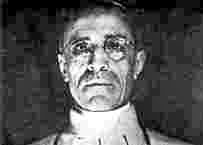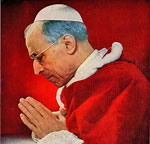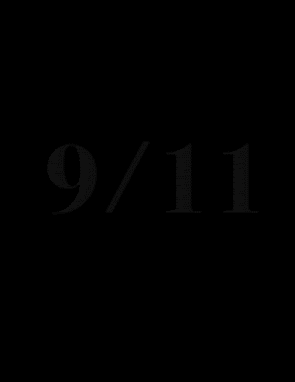The Pope was Jewish says historian
A MANCHESTER historian has claimed that Pope John Paul II was Jewish.

Yaakov Wise says his study into the the maternal ancestry of Karol Josez Wojtyla (John Paul II's real name) has revealed startling conclusions.
Mr Wise, a researcher in orthodox Jewish history and philosophy, said the late Pope's mother, grandmother and great-grandmother were all probably Jewish and came from a small town not far from Krakow.
The Pope was a priest and cardinal archbishop in the Polish city before his election to the papacy.
Mr Wise said: "According to orthodox Judaism, a person's Jewish identity is passed down through the maternal line. I saw a photograph of the Pope's mother and I showed it to people who didn't know who she was.
"They all said she looked Jewish. So I started doing more investigations about her background."
Although he believes the Pope's father was an ethnic Pole, he thinks that John Paul's mother Emilia Kaczorowski - Emily Katz in English - was Jewish and that she was the daughter of Feliks Kaczowski, a businessman from Biala-Bielsko in Poland. Katz is a common surname amongst East European Jewish families.
Emilia's mother, the Pope's grandmother, was Maria Anna Scholz. Scholz, or Schulze, is also a common surname among Jews, as is Rybicka, or Ryback, which is the surname of the Pope's great-grandmother Zuzanna.
All the names or their variations appear on gravestones in the old Biala Jewish cemetery, as does the surname of Felik's mother Urszula Maklinowska. Mr Wise said: "The Pope's ancestry has been researched by an American historian.
"But nobody has traced the family name through the Jewish community and, as Jewish historian, I have access to information that a non-Jewish historian wouldn't know about.
"I'm not making any firm conclusions, but what I'm saying is that there is a lot of circumstantial evidence to say that he was Jewish.
"The Pope's mother married out of the Jewish community to wed a Catholic. Her children were born and raised as Catholics and the Pope was baptised. It would shed light on why the Pope had to go into hiding from the Nazis in November 1940.
"If he had been a pure ethnic Pole this would not have been necessary.
"It would also explain why this Pope in particular felt a strong desire to improve relations between the Church of Rome and the Jewish people."
On the holiest of Jewish holidays, Yom Kippur, in the autumn of 1931, Guy de Rothschild walked through the massive street gate at 19 Rue Laffitte, for the first time as an adult on adult business. The day was chosen carefully, what others might perceive as the beginning of a banking career, to a Rothschild it was entering into a priesthood. At twenty-two, Guy was assigned letters to write. One of his correspondents was a Cardinal Pacelli, future Pope Pius XII, then in charge of Holy office finances, and who kept a small account at MM. de Rothschild Freres.  In the book, Hitler’s Pope, John Cornwall’s chronicles the life of Eugenio Pacelli, Pope Pius XII. Pacellli was arguably the most dangerous churchman in modern history. As Pontiff during World War II, not only did he fail to speak out against Hitler’s Final Solution, but he personally made the Final Solution possible!
In the book, Hitler’s Pope, John Cornwall’s chronicles the life of Eugenio Pacelli, Pope Pius XII. Pacellli was arguably the most dangerous churchman in modern history. As Pontiff during World War II, not only did he fail to speak out against Hitler’s Final Solution, but he personally made the Final Solution possible!
In the first decade of the twentieth century, Pacelli was a brilliant Vatican lawyer who helped shape a new ideology of unprecedented papal power. As papal nuncio in Munich and Berlin in the 1920’s, he used cunning and moral blackmail to impose Rome’s power on Germany. In 1933, he negotiated a treaty with Hitler, the Reich Concordat, which ensured that the Nazis would rise unopposed by the most powerful Catholic community in the world-sealing, by Hitler’s own admission, the fate of the Jews in Europe.
How could Eugenio Pacelli possibly have gotten away with such cunning, especially since we know that he was in personal contact with the Rothschilds. Guy de Rothschild was his pen pal eight years before he became Pope. But wait... if Pacelli was Hitler’s Pope, and Hitler was a Rothschild... then he was Rothschild’s Pope!
How did Eugenio Pacelli become Rothschild’s Pope? Eugenio Pacelli was described routinely, during his pontificate and after his death, as a member of the Black Nobility. The Black Nobility were a small group of aristocratic families of Rome who had stood by the popes following the seizure of their dominions in the bitter struggle for the creation of the nation-state of Italy... Pacelli’s father and grandfather before him owed their distinction to membership of the caste of lay Vatican lawyers in the service of the papacy.
Eugenio Pacelli was described routinely, during his pontificate and after his death, as a member of the Black Nobility. The Black Nobility were a small group of aristocratic families of Rome who had stood by the popes following the seizure of their dominions in the bitter struggle for the creation of the nation-state of Italy... Pacelli’s father and grandfather before him owed their distinction to membership of the caste of lay Vatican lawyers in the service of the papacy.
Pacelli’s immediate family association with the Holy See dates from 1819, when his grandfather, Marcantonio Pacelli, arrived in the Eternal City to study canon law, or Church law, as a protégé of a clerical uncle, Monsignor Prospero Caterini. By 1834 Marcantonio had become an advocate in the Tribunal of the Sacred Rota, an ecclesiastical court involved in such activities as marriage annulments. While raising ten children (his second child being Eugenio’s father, Filippo, born in 1837), Marcantonio became a key official in the service of Pius IX, popularly known as Pio Nono.
The quick tempered, charismatic, and epileptic Pio Nono (Giovanni Maria Mastai-Ferretti), crowned in 1846, was convinced, as had been his predecessors from time immemorial, that the papal territories forming the midriff of the Italian peninsula ensured the independence of the successors to St. Peter. If the Supreme Pontiff were a mere inhabitant of a "foreign" country, how could he claim to be free of local influence? Three years after his coronation, it looked as if Pio Nono had ignominiously lost his sovereignty over the Eternal City to a republican mob.
On November 15, 1849, Count Pellegrino Rossi, a lay government minister of the papal states, famous for his biting sarcasm, approached the Palazzo della Cancelleria in Rome and greeted a sullen waiting crowd with a contemptuous smile. As he was about to enter the building, a man leapt forward and stabbed him fatally in the neck. The next day, the Pope’s Quirinal summer palace above the city was sacked, and Pio Nono, disguised in a priest’s simple cassock and a pair of large spectacles, fled to the seaside fortress of Gaeta within the safety of the neighboring kingdom of Naples.
He took with him Marcantonio Pacelli as his legal and political adviser. From this fastness, Pio Nono hurled denunciations against the "outrageous treason of democracy" and threatened prospective voters with excommunication. Only with the help of French bayonets, and a loan from the Rothschild’s, did Pio Nono contrive to return to the Vatican a year later to resume a despised reign over the city of Rome and what was left of the papal territories.
From this we see that the Vatican owed it’s existence to the Rothschild’s from this point on.

![[Image6.jpg]](https://blogger.googleusercontent.com/img/b/R29vZ2xl/AVvXsEgNaIXg0_48iqICxzb6odLToabJmiXgIjhmXaaQyem2ZqzqBXttSLZ5ZLzpqG48utbI-EPPDZOwHW19xkVk6_qj-4gGaiLcqw1Lumv61U_Dp6ry0lnUKPQjm4QQaBs91esrSLKl7FKZEg/s1600/Image6.jpg)




![[Zionazis-1.jpg]](https://blogger.googleusercontent.com/img/b/R29vZ2xl/AVvXsEikwu0oZAslARhcp5cHmtn_ED-tlInbWtl392lehVem2UebCE8-gQUb_PM9b3QAHAeIAZqOe9OdInZLq5FQj9DJQ1WO-Fwk2rFEj21TTXPcrfgRXuKUBajDSGzzQbZYupW7oQgq9YhhZg/s1600/Zionazis-1.jpg)


